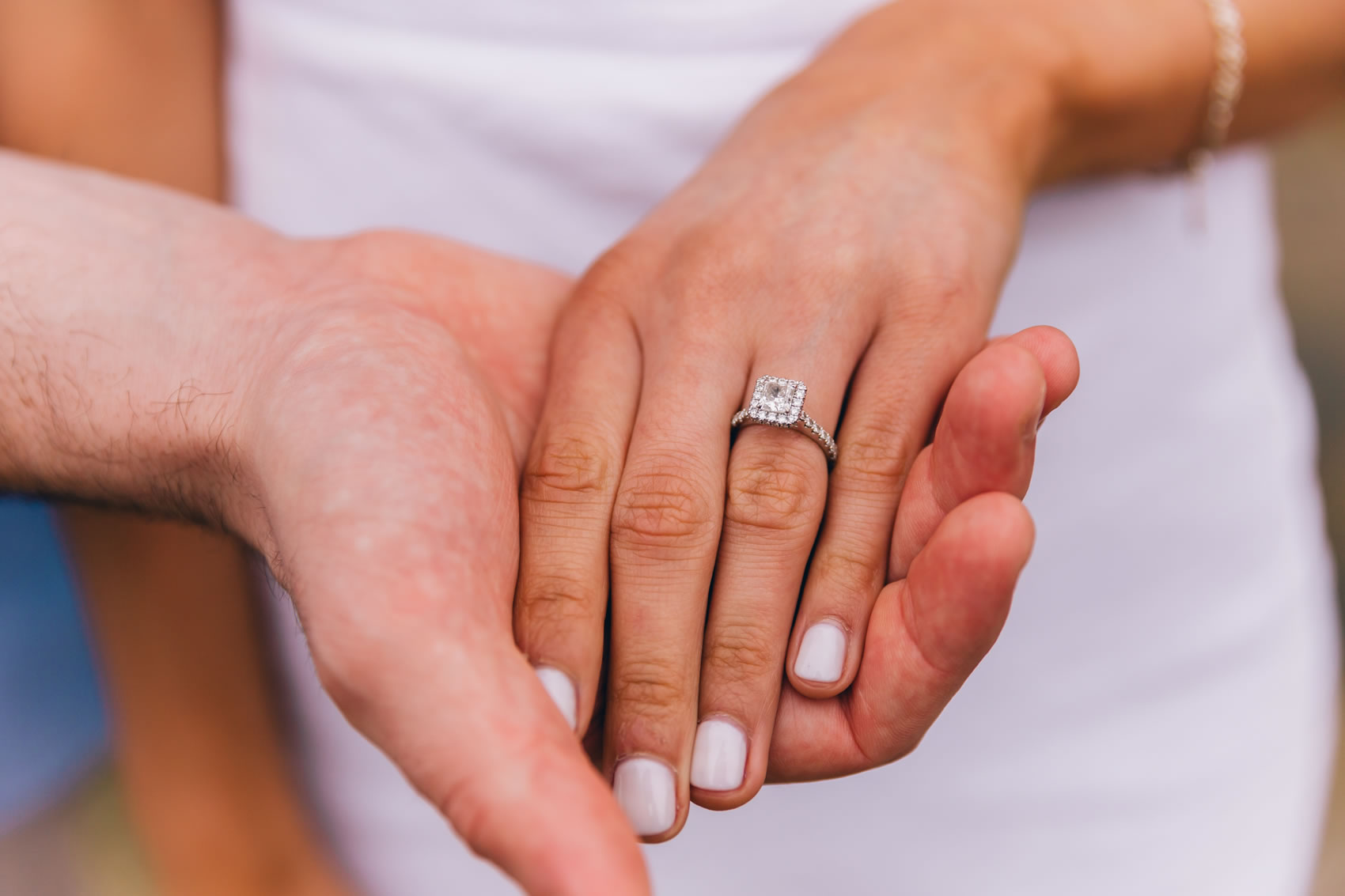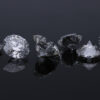For a lot of people, the process of getting engaged can appear daunting, as it might be the one of the most expensive purchases they’ve ever made, in an area they know very little about.
There are lots of variables which can affect the appearance, price and quality of the piece, all of which involve the use of technical language that can be confusing.
However, buying an engagement is a very special moment for any relationship, as it is an ever-present symbol of the love shared between two people. So it is important that you make the right decision.
That’s why we have decided to make the process as easy as possible with this step-by-step guide for choosing the perfect engagement ring for your other half.
Note: this guide is tailored towards buying diamond engagement rings, for rings featuring other precious gemstones e.g. sapphires or rubies there will be a separate guide to follow,
In terms of designing the ideal engagement ring for your other half the process essentially breaks down into three simple steps:
– the metal
– the stone
– the design
Essentially, the mount is the metal that the stone(s) will sit on, the stone is the diamond (or other precious gemstone) that will be the centre of attention for the piece, and the design- i.e. the shape of the ring, the setting style and whether there are any add ons e.g. diamond halo/shoulders.
Ring sizes, your partner’s preferences and second-guessing
For most couples, the person buying the ring won’t have the faintest clue what the ring size of their partner is.
The danger of simply guessing is the worry that when down on one knee, your partner’s ring is so small that it won’t make it over their knuckle (which doesn’t make for a good proposal photo!).
If the proposal isn’t a secret, then asking your partner for her ring size is the simplest method, however if it is going to be a secret there are a number of ways that the size can be calculated.
First of all, if your partner doesn’t wear all of their pre-existing rings at the same time, then when coming in for your appointment with us, if possible, bring one of these spare rings with you so we can measure it in the office.
If you are unable to do this, then any photographs of your partner’s hand (holding a glass is usually a good one!) are useful for us to have an educated guess on your partner’s ring size. Alternatively, plastic ring sizers can be purchased on the internet (Amazon), which can give a rough indication to the size of your partners’ existing rings, as well as several phone apps that let you measure ring size.
In a lot of cases the person buying the engagement ring will have little to no idea of what the recipient of the ring likes in terms of jewellery preference, with many proposals taking place without any prior discussion. This means that the process sometimes involves a little bit of guesswork and maybe even some subtle questions.
Your partner’s parents, family and friends might have an indication of their taste in jewellery, so if possible some light digging will help you get a better idea of what would be their dream engagement ring.
Alternatively, if they follow any jewellery accounts on social media (like us, for instance!), then they may give an indication to their preferences through their likes, if they comment on one of their friend’s rings or if they send any posts to you (this is a big giveaway usually!).
The Metal
The mount is the easiest decision, and basically is what metal the ring will be made from. There are only three or four metals to choose from, (18ct White Gold, 18ct Yellow Gold and Platinum being the three most popular choices).
The Stone
This is where things can become a bit more technical, and your options become much wider. The first decision is whether to choose a diamond or go slightly different with a precious gemstone.
Shape of the Stone
Like fingerprints and snowflakes, no two diamonds in the world are the same. They come in a wide array of shapes, sizes, and colours. The technical classification of diamonds refer to The Four C’s.
The four C’s are Cut, Colour, Carat and Clarity.
Cut– the cut of a diamond is ultimately the factor in how a diamond interacts with natural light and therefore affects how sparkly it is, in fact Tiffany & Co. believes that the cut of the ring is the most important of the four C’s.
The cut of a diamond affects how sparkly the stone is when hit with light, meaning that two stones with the same colour and clarity ratings can appear very different if one has a greater quality of cut than the other.
The cut of a diamond can range from “Excellent” and “Very Good” at the higher end, to “Fair” and “Poor” at the lower end.
A diamond with an “Excellent” rating for the cut will have the best sparkle, as the facets of the stone are perfectly aligned, and the measurements and proportions are allowing the correct balance of TIR (total internal reflection) giving you maximum sparkle brilliance.
Colour– A diamond is essentially a lump of coal that has been compressed and heated over millions of years, and in fact diamonds and coal both share the same elemental compounds (both are entirely made from carbon). However, in the case of diamonds some other elements are found within the carbon structure, which make the diamond appear to have colour. For instance when nitrogen compounds are found within the diamond structure, it makes the
diamond appear yellow. The more colourless a white diamond is, the more expensive it is, and it is measured on the scale of (D) completely colourless down to Z (very yellow).
Carat– the measurement for diamond weight is carats, with a one carat diamond weighing 0.2 grams. Obviously, as the carat weight of the diamond goes up, then so does the price. Two stones that appear to be the same size, however, may have differing carat weights. This is a consequence of the cut and spread of the stone.
Clarity– with every diamond there are tiny imperfections called “inclusions”, and they vaguely resemble scratches or little marks. Inclusions are natural imperfections within the stone. The range of clarity varies from the no inclusions, “flawless” to “included” which has inclusions visible with the naked eye.
● Flawless (FL) No inclusions and no blemishes visible under 10x magnification
● Internally Flawless (IF) No inclusions visible under 10x magnification
● Very, Very Slightly Included (VVS1 and VVS2) Inclusions so slight they are difficult for a
skilled grader to see under 10x magnification
● Very Slightly Included (VS1 and VS2) Inclusions are observed with effort under 10x
magnification, but can be characterised as minor
● Slightly Included (SI1 and SI2) Inclusions are noticeable under 10x magnification
● Included (I1, I2, and I3) Inclusions are obvious under 10x magnification which may affect transparency and brilliance
One of the difficulties in selecting your diamond is finding a balance between the four C’s. Whilst it would be lovely to have the highest classification for all of these sections, i.e a D colour, flawless, 3-carat Brilliant Cut diamond for their engagement ring, it would likely cost the same as a two bedroom house. Compromises, therefore, have to be made.
Add-ons / Additions
Once you’ve chosen the centre stone, the final stage is the addition of any ‘extras’ both in terms of additional diamonds or changes to the mount itself.
With the diamonds, some people prefer the style of a solitaire, a single diamond set into the mount with no other diamonds, however the addition of a diamond halo or diamond set shoulders are both very popular on engagement rings. A diamond halo is when the centre stone is surrounded by a ring of smaller set diamonds, which can give the impression that the centre stone is larger.
Diamond set shoulders is the addition of diamonds to either side of the centre stone.
If there are any aspects of the engagement ring process that you don’t understand then please do not hesitate to book an appointment and discuss it with one of our team to ensure the ring is perfect for you.



